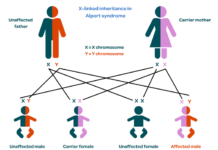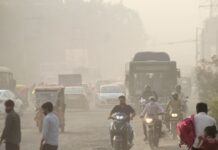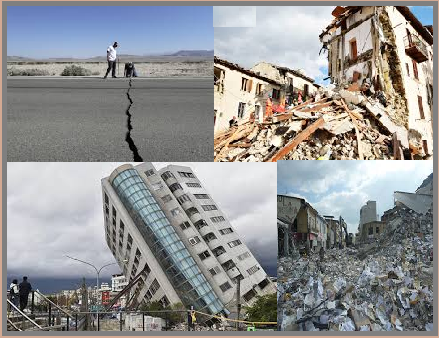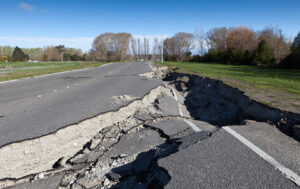Introduction
Natural calamities like earthquakes have always captivated and frightened people. These devastating earthquakes have the potential to cause extensive damage, fatalities, and serious economic and societal repercussions. We will explore the causes, impacts, and steps taken to lessen the impact of earthquakes in this blog article as we delve into the intriguing world of earthquakes.
Why Do Earthquakes Occur?
We must comprehend the forces operating under the Earth’s surface in order to comprehend earthquakes. When there is an abrupt release of energy in the Earth’s crust, seismic waves that shake the earth are produced. The shifting of tectonic plates is the main reason for earthquakes. The asthenosphere, which is semi-fluid beneath them, is separated into several huge plates that make up the Earth’s lithosphere. These plates are continually sliding past each other, crashing into one another, or drifting apart. An earthquake occurs when the stress built up by plate movements exceeds the resilience of the rocks.
The Strength and Size of Earthquakes
The Richter scale and the Moment Magnitude scale (Mw) are two scales used to measure earthquakes. These scales calculate the amount of energy released during an earthquake and reveal its size. The Modified Mercalli Intensity (MMI) scale also assesses the consequences of an earthquake on the Earth’s surface as well as the degree of harm done to buildings and populated areas. Knowing these scales aids in emergency response planning and helps us understand the destructive potential of earthquakes.
Affected by earthquakes
Earthquakes can have terrible impacts. Building collapses, infrastructure destruction, landslides, and fatalities are some of the immediate effects. However, towns and entire areas may suffer long-term effects as a result of earthquakes. Rescue and relief efforts are complicated by the disruption of communication networks, transportation routes, and water and electricity supply systems. It may take years to fully recover from the devastating psychological effects on survivors and the economic toll on the afflicted areas. Case studies of significant earthquakes, such as those that struck Haiti in 2010 and Japan’s Tohoku region in 2011, shed light on the wide-ranging repercussions of these catastrophes.
Impact of Earthquake Mitigation
It need a multifaceted strategy to lessen the effects of earthquakes. By identifying high-risk regions, seismic hazard assessments aid in the creation of appropriate building codes and infrastructure design standards. In earthquake-prone areas, retrofitting existing structures to withstand seismic forces is also essential. Some nations have put early warning systems into place, giving citizens crucial seconds or minutes of forewarning to take preventive measures. In order to promote safety precautions, facilitate effective emergency response, and prepare communities for earthquakes, education and awareness programmes are essential.
Advances in Earthquake Research and Technology
The study of earthquakes is still developing, which helps us understand them better and be more ready for them. To investigate fault lines, monitor seismic activity, and estimate the likelihood of earthquakes, seismologists use sophisticated monitoring networks and satellite-based observations. Equations for predicting ground motion can be used to gauge how strongly an earthquake will likely shake a location. Additionally, the creation of simulation models and computer algorithms helps forecast and simulate earthquake behaviour, facilitating emergency planning and response.
Earthquake Response: Emergency Planning and Action
A well-planned emergency response is essential to saving lives and reducing damage in the event of an earthquake. To create effective response systems, governments, emergency management organisations, and humanitarian groups collaborate. These networks include medical aid, temporary shelters, search and rescue teams, and the provision of basic necessities to impacted populations.
Preparedness for emergencies entails taking proactive steps including making plans for disaster response, running drills and exercises, and informing the public about earthquake safety. To ensure that structures can resist seismic forces, building codes and regulations are continuously revised. Additionally, the development of early warning systems and emergency communication networks aids in the prompt delivery of vital information to communities at risk.
international cooperation in disaster relief and earthquake research
Political boundaries are not respected by earthquakes, and their effects can cross international borders. Research on earthquakes and initiatives to aid in disaster relief are both greatly aided by international cooperation. International scientists, engineers, and decision-makers gather to exchange information, skills, and resources.
International cooperation in earthquake research and preparedness is facilitated by global organisations like the International Seismological Centre (ISC) and the United Nations Office for Disaster Risk Reduction (UNDRR). These groups support the dissemination of knowledge, the development of capabilities, and the creation of standardised procedures for earthquake monitoring, data analysis, and response.
International aid plays a crucial role in delivering rapid help to impacted areas during large-scale earthquakes. Countries having experience responding to earthquakes offer assistance in the form of technical know-how, medical staff, humanitarian aid, and search and rescue teams. The impact of resources and support is maximised through the coordination of international relief operations, ensuring a more effective and efficient response.
Conclusion
Earthquakes continue to be a dangerous natural hazard that can cause extensive destruction. However, we can lessen the effects of earthquakes and save lives through scientific discoveries, international cooperation, and community readiness. We can build a world that is safer and more resilient to earthquakes by prioritising earthquake research, investing in earthquake-resistant infrastructure, and putting in place efficient emergency response plans.









































